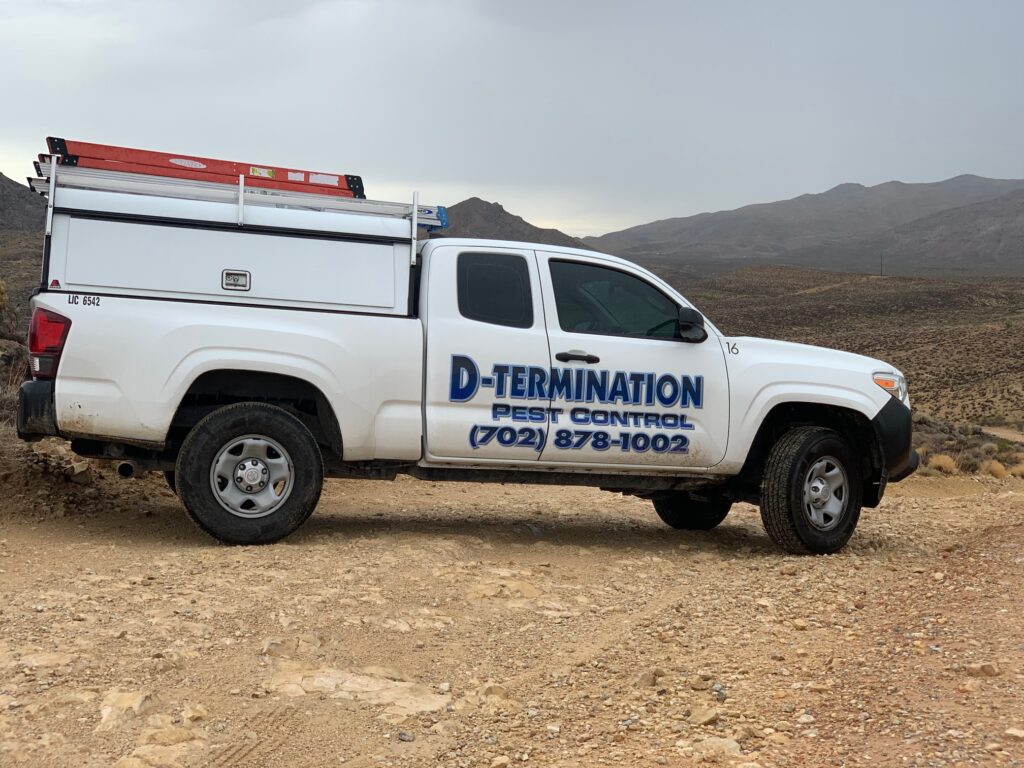Welcome to the fascinating world of scorpions! These enigmatic creatures have been around for millions of years, captivating both scientists and curious minds alike.
With their fearsome appearance and venomous reputation, scorpions have earned a place in mythology and folklore throughout history. Today, we will delve into the captivating realm of scorpions, particularly exploring their surprising presence in the vibrant city of Las Vegas.
Brief Overview of Scorpions in General

Scorpions are arachnids belonging to the order Scorpiones, which encompasses over 2,500 known species. These resilient creatures have successfully adapted to a wide range of habitats across the globe.
From deserts to rainforests, they can be found lurking in various corners of our planet. Scorpions are characterized by their distinctive appearance — a pair of pincers or claws known as pedipalps and a segmented tail that ends with a barbed stinger.
One aspect that sets scorpions apart from their arachnid relatives is their ability to produce venom. While not all scorpion species possess venom potent enough to harm humans significantly, it’s wise to approach them with caution due to variations in toxicity levels among different species attract scorpions.
The most notorious among them is undoubtedly the Bark Scorpion (Centruroides sculpturatus). This particular species of bark scorpions boasts the unenviable title of being North America’s most venomous scorpion.
Teaser about Scorpions in Las Vegas
Now, let’s turn our attention specifically towards Las Vegas – a city renowned for its vibrant nightlife and entertainment culture rather than its association with creepy crawlies. However, unbeknownst to many visitors and even some locals, scorpions have made themselves quite at home within this dazzling desert oasis. Despite the stark contrast between the bright lights of the Las Vegas Strip and the arid landscapes surrounding it, scorpions have managed to establish a niche in this unlikely environment.
Exploring the presence of scorpions in Las Vegas will not only shed light on their fascinating adaptability but also provide valuable insights into cohabitation with arachnids that are oftentimes misunderstood. Join us as we uncover the secrets of these nocturnal hunters, their behavior, and ways in which both residents and visitors can ensure a harmonious existence alongside them.
Scorpions in Las Vegas: An Unexpected Presence

Climate and Habitat Suitability for Scorpions
Las Vegas, known for its scorching desert climate, may seem like an unusual habitat for scorpions. However, these resilient arachnids have adapted remarkably well to the dry and arid conditions prevalent in the Las Vegas Valley.
With its hot summers, mild winters, and low rainfall, the region provides an ideal environment for scorpion survival. Scorpions are highly adaptable creatures that can thrive in a variety of climates, but the warm temperatures and lack of precipitation make Las Vegas a desirable location for them to call home.
Common Species Found in the Area
Las Vegas is home to several species of scorpions, but two particular ones stand out as being frequently encountered by residents and visitors alike. The Arizona Bark Scorpion (Centruroides sculpturatus) is one such species of giant hairy scorpion that has made itself quite at home in Sin City. This venomous creature measures around three inches in length and has a light brown coloration with two dark stripes running along its back.
Another prominent species of scorpion found here in Las Vegas is the Desert Hairy Scorpion (Hadrurus arizonensis). These larger scorpions can grow up to four pairs and eight inches long and are characterized by their thick brown exoskeletons covered with fine hairs.
Factors Contributing to Their Presence in Las Vegas
While it may be surprising that scorpions have staked their claim in Las Vegas properties amidst flashing lights and bustling casinos, there are specific factors contributing to their presence here. Urban sprawl and human activity have played a significant role in providing suitable hiding spots for these creatures. As urbanization continues to encroach upon natural habitats, scorpions seek refuge under rocks, debris piles, or within undisturbed areas of residential properties.
Additionally, scorpions are known to be attracted to artificial light sources, making Las Vegas a particularly attractive place for these nocturnal hunters. The bright lights that illuminate the city at night provide ample opportunities for scorpions to find insects and other prey that are also attracted to the lights.
Although scorpions may not be the first creatures that come to mind when envisioning Las Vegas, their presence in this arid desert city is not as unexpected as one might think. The climate and habitat suitability, combined with factors such as urban sprawl and attraction to artificial light sources, have created an environment where scorpions and other bugs can thrive.
Understanding these aspects of their presence is crucial in taking appropriate measures for prevention and ensuring the safety of residents and visitors alike. (Note: Please note that while the article is written in a casual style, it maintains accuracy and factual information about scorpions in Las Vegas.)
The Nocturnal Hunters: Scorpion Behavior and Adaptations

Nocturnal lifestyle and hiding during the day
In the scorching desert environment of Las Vegas, scorpions have cleverly adapted to a nocturnal lifestyle. They are most active during the cooler nighttime hours when temperatures are more tolerable for their survival. During the day, you will rarely catch a glimpse of these elusive creatures as they seek shelter from the blistering sun.
They are experts at finding hiding places in rocks, crevices, under vegetation, or even burrowing underground to escape the heat. Their ability to blend into their surroundings and remain hidden during daylight hours is truly remarkable.
Unique hunting techniques and prey preferences
Scorpions are skilled hunters with unique adaptations that aid them in capturing their prey. Using their keen sense of touch and vibration detection, they can quickly locate potential meals such as insects, spiders, and other arthropods. Once they identify a suitable target, scorpions rely on their lightning-fast reflexes to strike with precision and accuracy, injecting venom through their stingers into their unfortunate victims.
Use of venomous stingers for subduing prey

The venomous stingers possessed by scorpions serve two vital purposes: defense against predators and immobilizing prey during hunting. While some people may consider all scorpion species dangerous due to their venomous nature, it’s important to note that not all scorpion species found in Las Vegas possess potent venom that poses a severe threat to humans.
The tree bark and bark scorpion sting is considered more potent compared to other scorpion species but is rarely life-threatening unless there are underlying health concerns or an allergic reaction occurs. Scorpions inject just enough venom into their prey to immobilize it without risking injury to themselves or wasting precious energy reserves.
Their ability to control the amount of venom delivered enables them to conserve resources and secure their next meal. It’s fascinating how these arachnids have evolved such a sophisticated method of subduing their prey, highlighting the remarkable adaptations that have allowed scorpions to thrive in the harsh desert environments, including the Las Vegas Valley.
Human-Scorpion Interactions: Stings and Safety Measures

Frequency of Scorpion Stings in Las Vegas: A Surprising Reality
When it comes to scorpions, Las Vegas has a reputation that often precedes it. While encountering scorpions may not be an everyday occurrence, the frequency and types of scorpion stings in this city are worth exploring. It’s important to note that most scorpion stings in Las Vegas happen during the warmer months when these arachnids are more active.
Locals and tourists alike should remain cautious during their outdoor adventures, especially in areas known for scorpion populations. Though the incidence of stings from scorpions varies from year to year, it is crucial to understand the potential risks and be prepared.
Symptoms and Severity of Scorpion Stings: From Mild Annoyance to Serious Concern
Scorpion stings can range from mild discomfort to more severe reactions depending on various factors such as the species involved and an individual’s sensitivity. Most scorpions found in Las Vegas, like the Arizona Bark Scorpion or the Desert Hairy Scorpion, possess venomous stingers located at the end of their segmented bodies and tails.
When a sting occurs, symptoms can include localized pain, swelling, numbness, or tingling sensations around the sting area. Fortunately, most people only experience mild reactions that subside within a few hours.
Common Misconceptions About Scorpions: Dispelling Fear with Facts
Despite their intimidating appearance and fearsome reputation perpetuated by movies and myths, it’s essential to debunk common misconceptions surrounding scorpions’ danger level. Firstly, while most scorpions are venomous to some extent, only a small fraction pose serious risks to humans. In fact, most species of scorpions found in Las Vegas have relatively weak venom that rarely leads to life-threatening situations.
Secondly, scorpions are not naturally aggressive creatures; they sting primarily in self-defense when they feel threatened or cornered. By understanding these facts, we can approach our encounters with scorpions in a more informed and rational manner.
Rare Instances Requiring Medical Attention: When to Seek Help
Though most scorpion stings are relatively harmless and resolve on their own, there are rare cases where medical attention becomes necessary. Certain individuals, such as children, the elderly, or those with pre-existing medical conditions, may be more susceptible to severe reactions.
If symptoms worsen rapidly or include severe pain, difficulty breathing, muscle twitching, or convulsions, it is crucial to seek immediate medical assistance. Remember that prevention is key when it comes to scorpion problems and avoiding these rare instances; taking appropriate safety measures can significantly reduce the likelihood of encountering dangerous situations related to scorpion stings.
In a city known for its vibrant entertainment and bustling nightlife like Las Vegas, understanding human-scorpion interactions becomes imperative for both locals and tourists alike. By comprehending the frequency of scorpion stings in the area and recognizing the symptoms and severity of these encounters, we can navigate potential hazards with greater confidence.
Dispelling the common scorpions and misconceptions about their danger level allows us to approach these arachnids rationally while appreciating their essential role in maintaining ecological balance. While rare instances may require medical attention due to severe reactions from stings, being aware of preventive measures ensures a safer coexistence with scorpions in Las Vegas’ unique ecosystem.
Science Meets Prevention: Controlling Scorpion Populations

Residential pest control methods
Living in an area where scorpions are prevalent, such as Las Vegas, means taking necessary precautions to prevent dangerous scorpions from entering your home. One of the most effective methods to find scorpions is implementing exclusion techniques.
This involves sealing any possible entry points, and cool places such as cracks in walls or gaps under doors. By blocking these access routes, you’re minimizing the chances of scorpions finding their way inside.
Chemical treatments targeting nesting areas
In addition to exclusion techniques, chemical treatments can be employed to target scorpion nesting areas outside your home. Pest control professionals use specialized insecticides that are designed to eliminate scorpions and disrupt their breeding cycles.
These treatments focus on potential hiding spots like rocks, woodpiles, trash cans, and dense vegetation around your property. By regularly treating these areas, you can significantly reduce the population of scorpions near your vicinity.
Natural predators as a means of population control

Nature has its own way of keeping populations of pests in check, and scorpions have their fair share of natural predators. Creatures like birds (such as roadrunners), lizards other insects (like geckos), and even certain spider species feed on scorpions.
Encouraging the presence of these natural predators can act as an effective means of population control without relying solely on chemicals or other interventions. Encouraging beneficial wildlife by creating a hospitable environment for them is key.
For instance, providing birdhouses or bird feeders can attract avian predators that naturally prey on scorpions while adding beauty to your surroundings. Similarly, maintaining a diverse ecosystem with native vegetation will help prevent scorpions and attract lizards and spiders that feed on these arachnids.
While encountering scorpions in Las Vegas may initially seem concerning, there are effective methods to prevent their presence in your home. By implementing exclusion techniques, using chemical treatments to target nesting areas, and promoting the presence of natural predators, you can significantly reduce the risk of having scorpions in your vicinity.
Remember that scorpions play a role in the ecosystem, so it’s important to find a balance between controlling their populations and preserving biodiversity. Stay vigilant but also appreciate the beauty and resilience of these remarkable creatures who have adapted to survive even in challenging environments like Las Vegas!
Conquer Scorpions with D-Termination: Las Vegas’ Leading Pest Control Solution!

If you’re facing concerns about scorpions on your Las Vegas property, let D-Termination take care of it. Our team of experts is specialized in removing these venomous pests, reinstating safety in your surroundings. Bid farewell to scorpion worries and opt for D-Termination for efficient pest control today!
To schedule your scorpion control service and regain control of your space from these unsettling pests, get in touch with us at 702-919-6310 or visit dtermination.com.
Frequently Asked Questions:
The parts of Las Vegas with the highest scorpion populations are typically suburban areas near desert landscapes.
Scorpions become more active in Las Vegas during the warmer months, usually from spring to fall.
Dealing with scorpions in Las Vegas involves sealing entry points, reducing moisture, and using scorpion repellents or seeking professional pest control services.
Scorpions are attracted to Las Vegas due to its desert environment, warmth, and suitable habitats like gardens or unsealed homes.
If this article captured your interest, you might also find these related pieces intriguing:
Scorpion Distribution: Understanding The Importance Of Their Habitat








